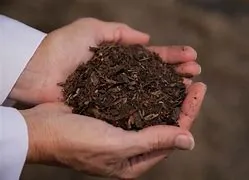Soil
- Know your Soil (EHN 55)
Soils vary greatly from one place to another. Some are ideal–they are deep, easily worked, and fertile. Many have physical or chemical limitations–they are too shallow, too sandy, too clayey, too steep, or too low in fertility. Some are too salty or contain other chemicals that are toxic to plants. On the other hand, there are very few places where good gardens and landscape plantings cannot be grown. The secret is to know the nature of the soil, the kinds of problems to expect, and what can be done about them. - Improving Layered Soils for Gardens (EHN 56) Speaks about the importance of avoiding soil compaction
- Managing Clay Soils in the Garden (EHN 54) Find out ways to manage clay soil
- Gardening on Hardpan Soils (EHN 53) Hardpan soils are noted for the problems they present. However, if the nature of the soil is understood the problems can usually be overcome.
- Sheet Mulching (EHN 94) Sheet Mulching is a layered mulch system. It is a simple and underutilized technique for optimizing the benefits of mulch.
Why Compost?

- It is nature's way to turn fruit, vegetable, and yard trimmings into soil amendment.
- Benefits the environment by recycling organic resources and extending the life of landfills.
- Improves water holding capacity of soil, and helps prevent water runoff and erosion.
- Promotes soil fertility, and stimulates health root development.
- Helps clay soil from compacting and adds structure to both clay and sandy soils.
Composting—Landfill Diversion
- What are Hot and Cold Methods? (video)
- Consider Grasscycling (Publication 8006 PDF 107KB)
- Rake up leaves on lawns. Use fallen non-diseased leaves as mulch or add to compost bin as carbon material.
- Pull nonperforming annuals, chop up insect/disease free plants and add to compost pile.
Check out these informative publications.
- Composting for the Home Gardener (EHN 98)
- Composting Tips and Tricks (GN 142)
- Compost in a Hurry (UCANR 8037)
- Composting with Worms—Publication Oregon (EM 9034)
- Vermiculture—Worm Composting (GN 144)
